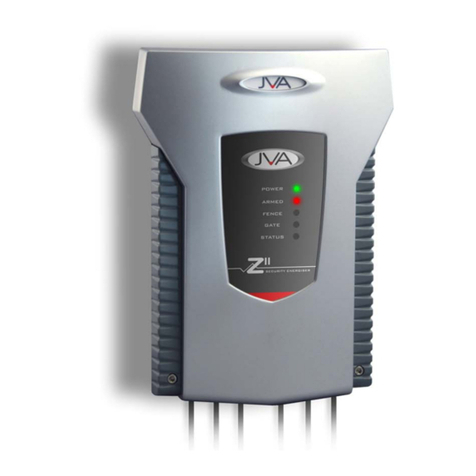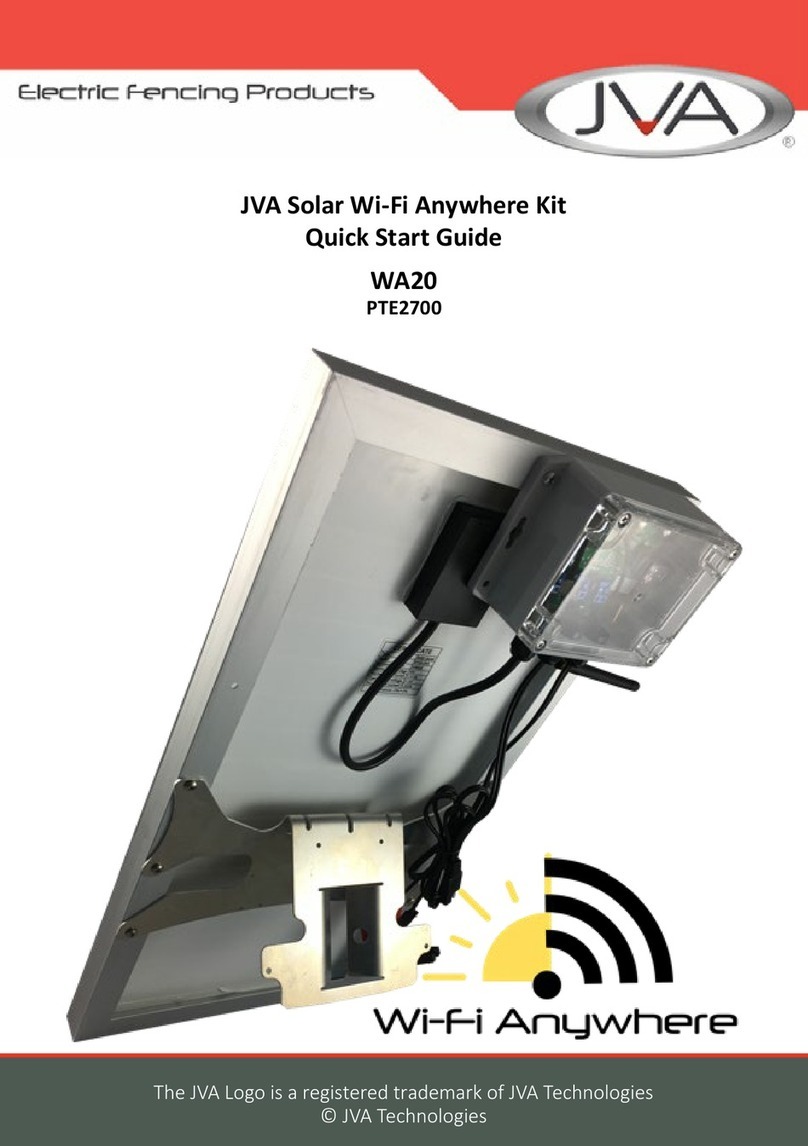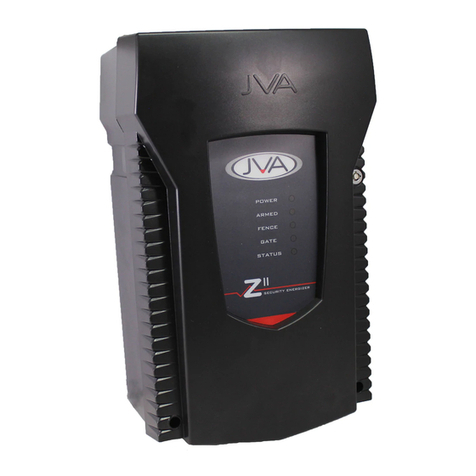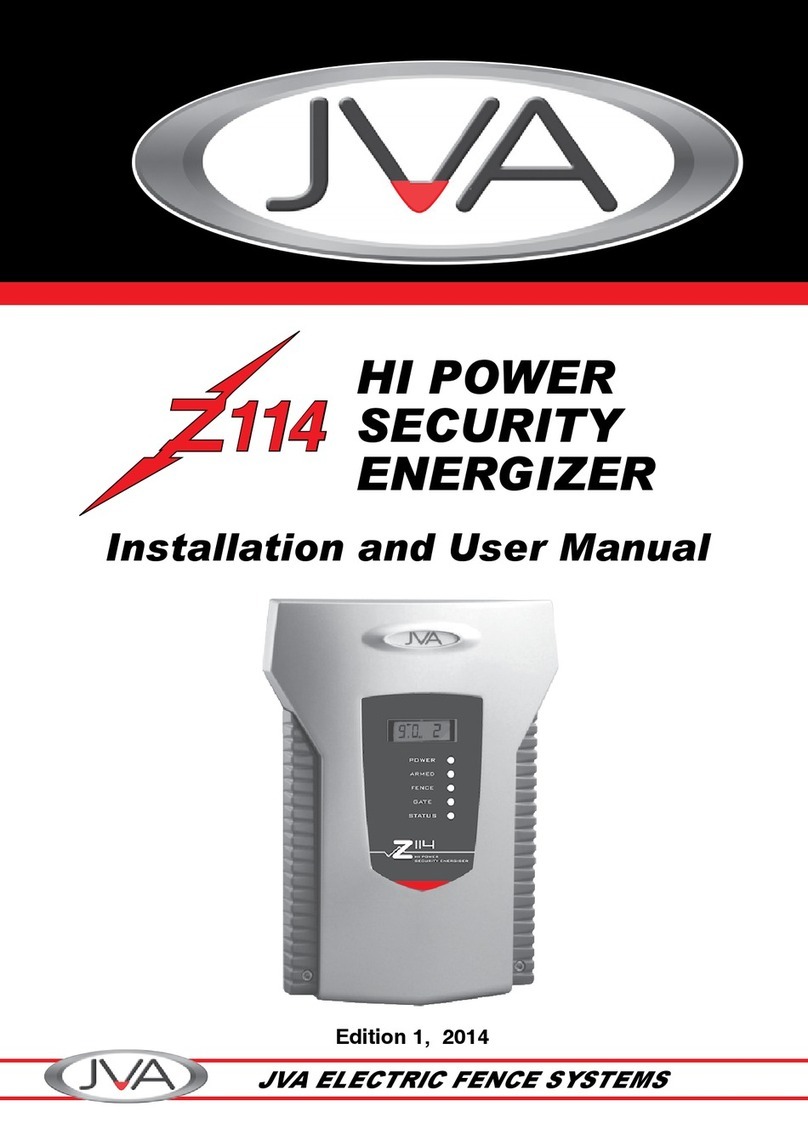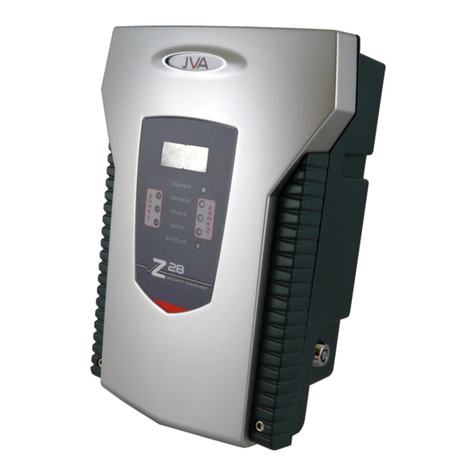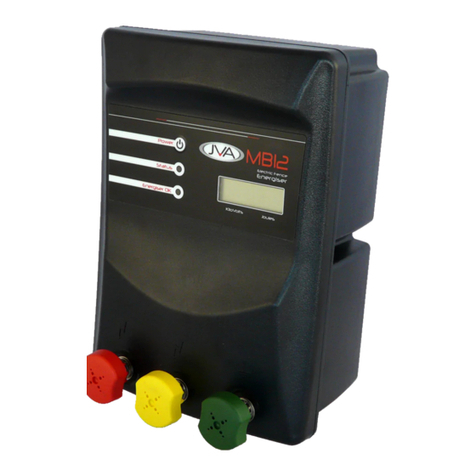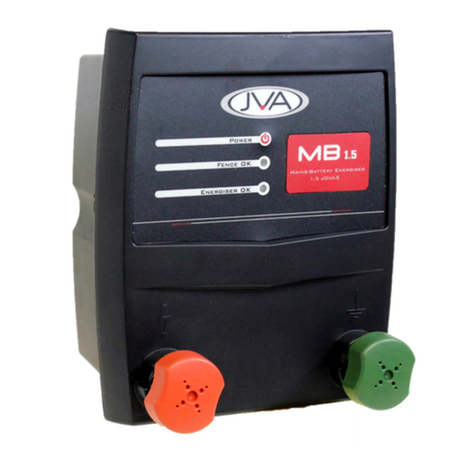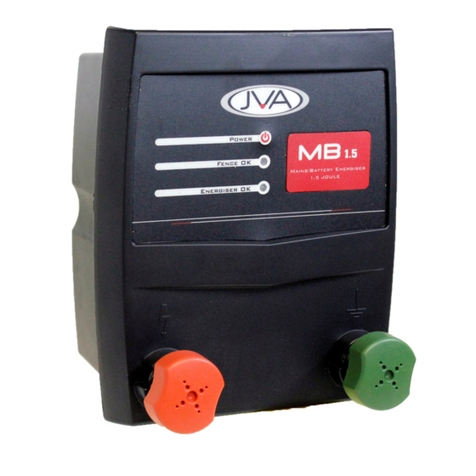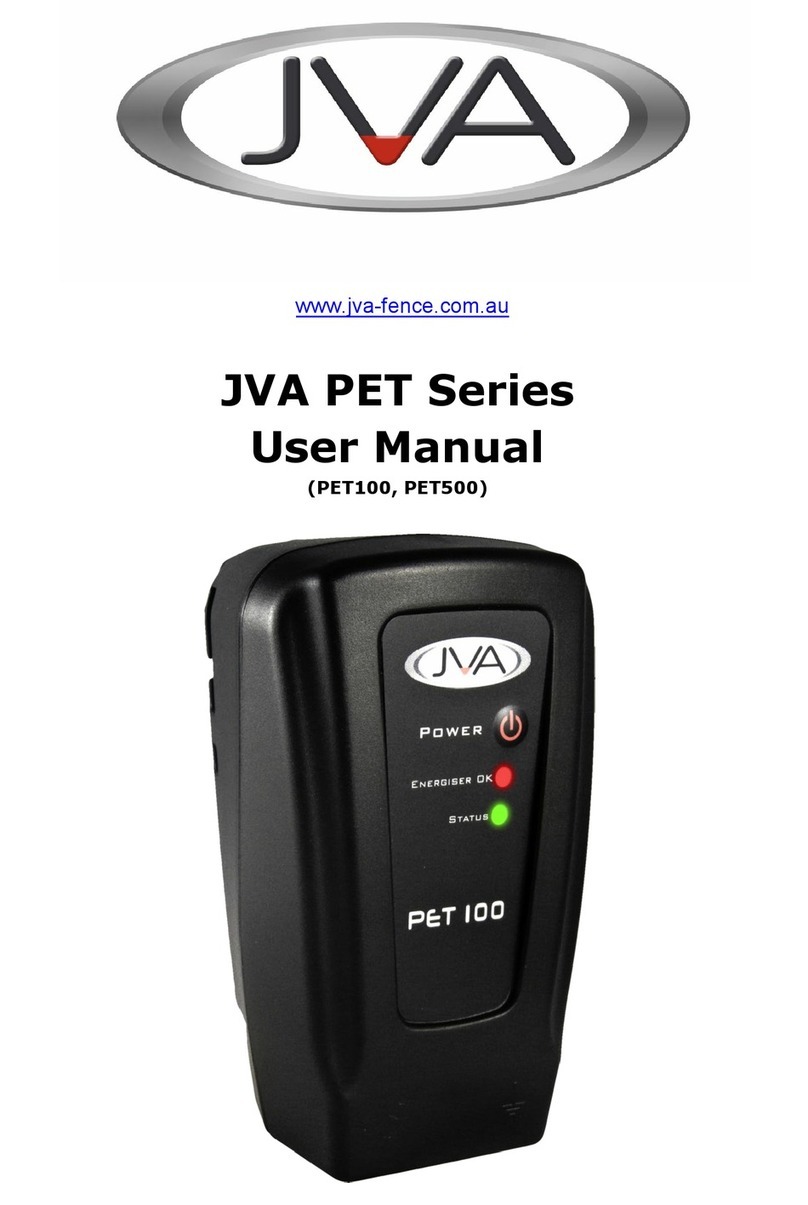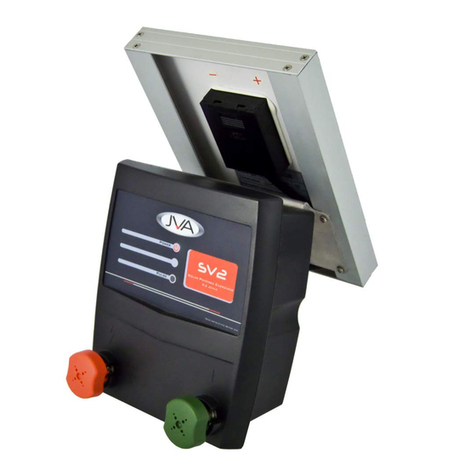4
1 Important notes –PLEASE READ
1.1 Electric Fences
1. Electric fences are not toys; do not let children play with them.
2. Electric fences should only be installed with regard to the relevant
Standards and work place health and safety requirements.
3. Electric fences should be signed. Warning signs that comply to IEC
standards should be prominently displayed on electric fences at
distances specified by the country in which they are installed.
4. Electric fences must have an ‘earth’. An electric fence ground is one
or more pieces of metal (eg. 1.8m Galvanized earth rods) driven into
the earth to a depth of at least 1.2m. Three earthing rods are
recommended for customers purchasing the MB8, MB12, or MB16.
Additional earth connections may be required at the energizer or
along the fence in poor soil conditions.
1.2 Energizers
1. The energizer places a very short, safe, high voltage pulse on the
fence live wires approximately once every second. Please be advised
that there is always a risk associated with any device designed to
impart an electric shock. Do not allow children or elderly persons to
touch the energizer or fence live wires.
2. The maximum length of fence able to be energised depends on many
factors, for example the earth resistance, number and spacing of
wires on the fence, type/quality of insulators, resistance of wire,
whether the wiring configuration is series or parallel etc. The amount
of grass or shrubbery touching the wires also alters the performance.
Fence circuit layout is very important. Another factor to consider is
acceptable fence voltage, for some stock situations this is 3kV others
require more or less. Therefore the rated mileage of fence that the
energizer will power effectively is a guide only.
3. DANGER! The Energizer should never be operated with the cover
removed as high voltages exist inside the enclosure while operating.
High voltage may remain on some internal parts long after the unit has
been switched off.
1.3 Power Supply Options
The JVA MB series of electric fence energizers can be powered from a
range of power sources.
•12 or 24V external battery (not supplied)
•12 or 24V external battery with solar panel (not supplied)
•110/240Vac via power pack (supplied with MB models only)
The JVA SV series of electric fence energizers are fully self contained
solar powered energizers. Each energizer in the SV series comes with an
internal battery, integrated battery charger, solar panel bracket and solar
panel.






